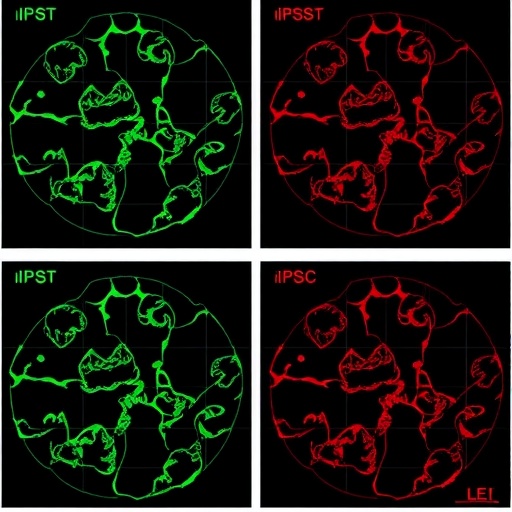Stable body weight may hide loss of muscle, 40 percent higher risk of premature death

Credit: Pennington Biomedical Research Center
Colorectal cancer survivors who maintained a stable body weight but lost muscle and developed fatty deposits in their muscles faced a 40 percent higher risk of premature death than patients who avoided both health issues.
“The conventional wisdom has been that colorectal cancer patients should avoid losing or gaining weight during treatment,” said Dr. Justin C. Brown, Assistant Professor and Director of the Cancer Metabolism Program at Pennington Biomedical Research Center. “But maintaining your weight does not mean your body composition remains the same. Muscle can change quite dramatically, and those changes are associated with a much higher risk of death.”
The researchers say assessing body composition by computed tomography images may be a vital method of identifying patients at increased risk of death.
This study highlights how body composition can have a powerful impact on long-term health. We at Pennington Biomedical are committed to conducting innovative research to enable cancer survivors around the world to achieve their best possible health,” said Dr. John Kirwan, Executive Director.
The study, published in The American Journal of Clinical Nutrition, looked at 1,921 patients with stage I-III colorectal cancer. Skeletal muscle and body weight were measured at diagnosis and an average of 15 months later. Stable body weight was defined as being within plus or minus 5 percent of weight at diagnosis.
Researchers found that stable body weight masks clinically meaningful skeletal muscle depletion. Women were particularly vulnerable to losing muscle. One in five women with stable body weight lost muscle, while less than one in 10 men did.
“More research is needed to determine whether physical activity offers the best solution to prevent muscle loss or fatty deposits in muscle,” Dr. Brown said. “But the findings provide colorectal cancer patients with more incentive to engage in physical activity programs that maintain and build muscle.”
###
This work was supported by the National Cancer Institute of the National Institutes of Health under Award Numbers R00-CA218603; K01-CA226155; R01-CA175011; and R25-CA203650 and the National Institute of General Medicine Sciences of the National Institutes of Health under Award Number U54-GM104940. The content is solely the responsibility of the authors and does not necessarily represent the official views of the National Institutes of Health.
About the Pennington Biomedical Research Center
The Pennington Biomedical Research Center is at the forefront of medical discovery as it relates to understanding the triggers of obesity, diabetes, cardiovascular disease, cancer and dementia. The Center conducts basic, clinical, and population research, and is affiliated with Louisiana State University. The research enterprise at Pennington Biomedical includes over 450 employees within a network of 40 clinics and research laboratories, and 13 highly specialized core service facilities. Its scientists and physician/scientists are supported by research trainees, lab technicians, nurses, dietitians, and other support personnel. Pennington Biomedical is located in state-of-the-art research facilities on a 222-acre campus in Baton Rouge, Louisiana. For more information, see http://www.
Pennington Biomedical Research Center
6400 Perkins Road
Baton Rouge, LA 70808
Media Contact
Ted Griggs
[email protected]
Original Source
https:/
Related Journal Article
http://dx.





